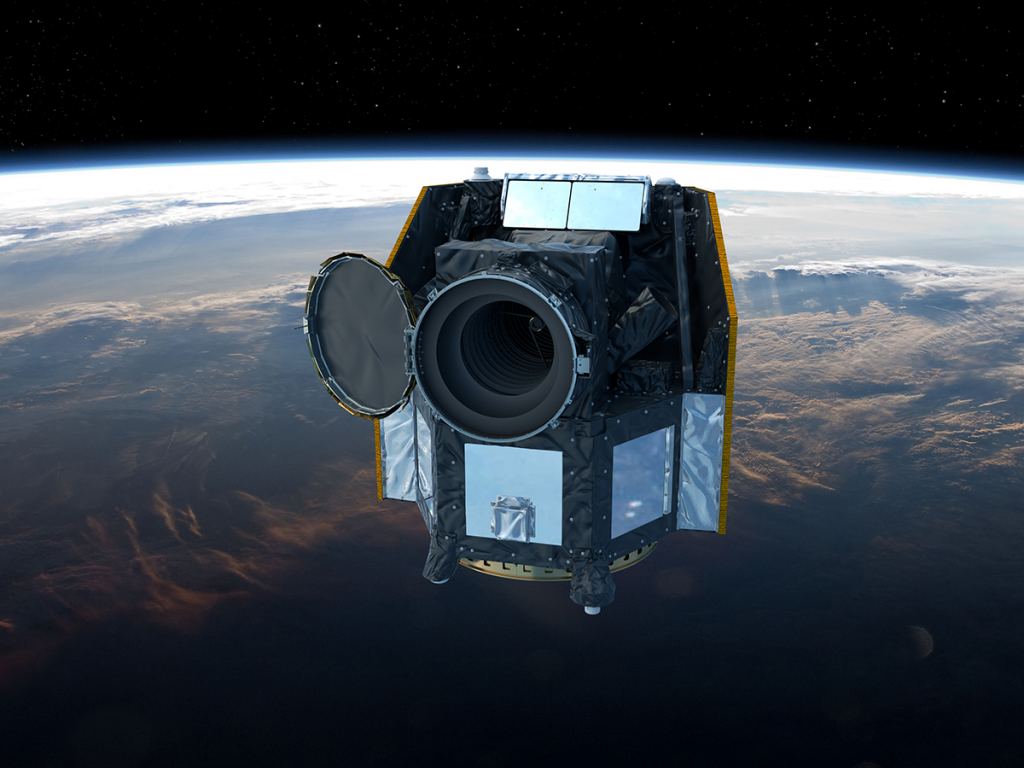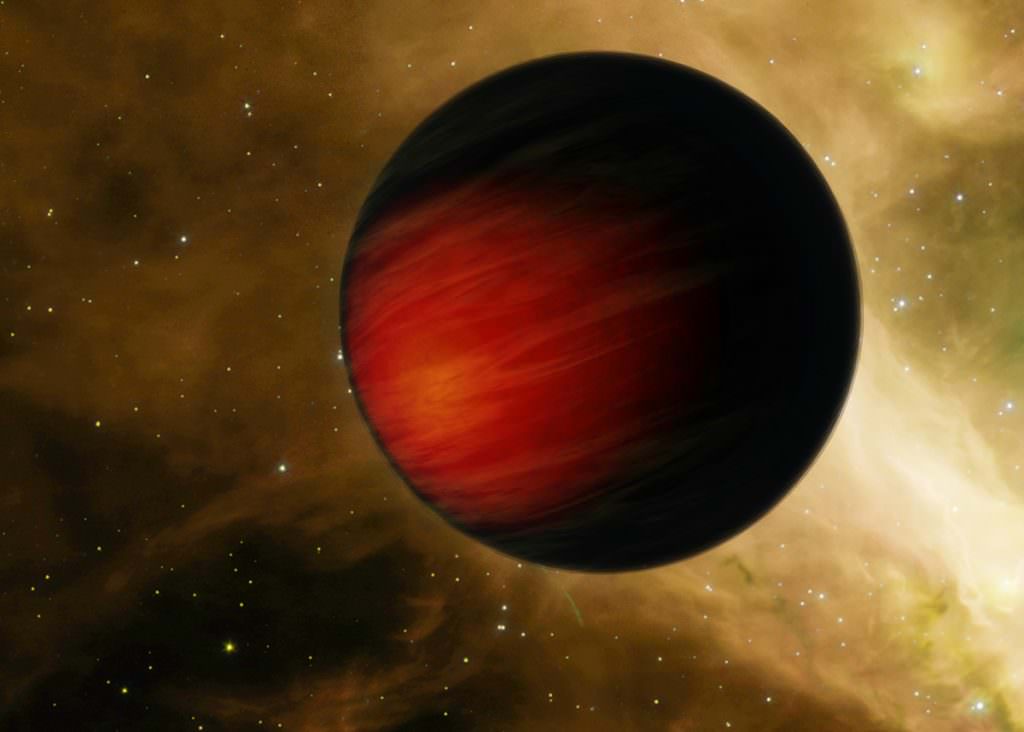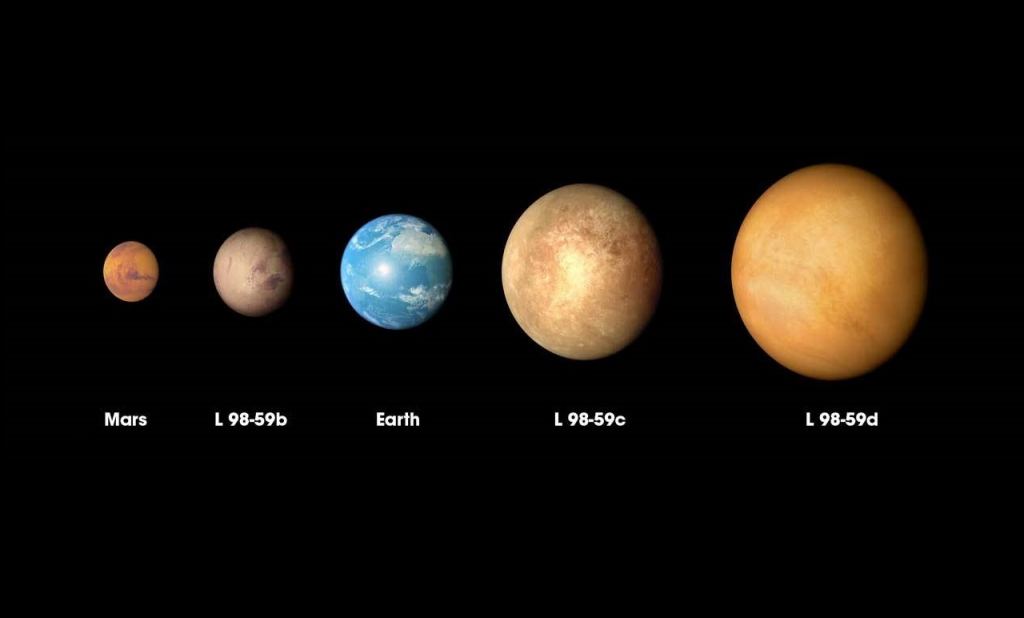The CHEOPS spacecraft is taking the first tentative steps in its mission. Back on January 29th, the spacecraft opened the cover on its lens. Now, we have the first images from CHEOPS.
CHEOPS stands for CH aracterising E x OP lanet S atellite. It's a European Space Agency (ESA) mission to study some of the brightest and closest stars that are already known to host exoplanets. CHEOPS will make precision measurements of exoplanet sizes in order to reveal the density and composition of the worlds. It's focusing on planets in the super-Earth to Neptune mass range.
Don't get too excited yet. These first images won't win any awards.
But they're not meant to. Their purpose is to verify that the satellite's systems are working, so their blurry nature is a critical part of the mission. And as the team waited for the first images the tension grew.
"When the first images of a field of stars appeared on the screen, it was immediately clear to everyone that we did indeed have a working telescope." Willy Benz, Principal Investigator, CHEOPS Mission.
"The first images that were about to appear on the screen were crucial for us to be able to determine if the telescope's optics had survived the rocket launch in good shape," explains Willy Benz, Professor of Astrophysics at the University of Bern and Principal Investigator of the CHEOPS mission, in a press release. "When the first images of a field of stars appeared on the screen, it was immediately clear to everyone that we did indeed have a working telescope," said Benz.
Now that the CHEOPS team knows the telescope is working, they need to know how well it's working. The team has had some time to analyze the image, and they say that CHEOPS is actually exceeding expectations. But in this case, CHEOPS is deliberately unfocused for testing, so better doesn't mean clearer.
"This beautifully blurred image carries the promise of a new, deeper understanding of worlds beyond our Solar System." Kate Isaak, ESA Cheops Project Scientist.
"The good news is that the actual blurred images received are smoother and more symmetrical than what we expected from measurements performed in the laboratory," says Benz. The blurred testing is designed to spread incoming light over as many pixels as possible. The results will tell the CHEOPS team if the telescope is smoothing out its jitters and its "pixel-to-pixel variations." That smoothing is what will give CHEOPS its exceptional precision.
Even though it's blurry, it's the first image. And that makes it a milestone for the ESA and the CHEOPS team.
"This is a defining moment for the mission," said Nicola Rando, ESA project manager for Cheops, in a press release.
"To the engineers and scientists across Europe who have worked and continue to work on Cheops, this image represents the culmination of many years of dedication and effort – designing, planning, coordinating and building this new and unique satellite," said Rando.
"These initial promising analyses are a great relief and also a boost for the team." WILLY BENZ, PRINCIPAL INVESTIGATOR, CHEOPS MISSION.
These tests are all about the precision that CHEOPS needs to fulfill its mission. CHEOPS isn't a planet-finding mission. It's going to examine already-known exoplanets with extreme precision. It needs to sense extremely small dips in brightness as an exoplanet transits in front of its star. Since it's the size of the planet that determines that dip, the more precisely CHEOPS can measure the dip, the more precisely it can determine the size of the planet.
"These initial promising analyses are a great relief and also a boost for the team," said Benz.
This is just the beginning of CHEOPS' testing phase. Over the course of about two months, the satellite will take more images. The overall goal of all these tests is to determine how accurate the spacecraft can be during different parts of its mission. "We will analyze many more images in detail to determine the exact level of accuracy that can be achieved by CHEOPS in the different aspects of the science program," said David Ehrenreich, CHEOPS project scientist at the University of Geneva. "The results so far bode well."
The CHEOPS mission, like all space missions, has been years in development. Milestones like these are important, and are gratifying to the people who work on the mission.
"Now that Cheops has observed its first target, we are one step closer to the start of the mission science," said Kate Isaak, ESA Cheops project scientist. "This beautifully blurred image carries the promise of a new, deeper understanding of worlds beyond our Solar System."
The Kepler mission revolutionized our understanding of exoplanets. Its results confirmed what many had guessed: most stars host planets, just like our Solar System does. Now, thanks largely to Kepler, we know of over 4000 confirmed exoplanets. CHEOPS represents the next step in characterizing and understanding exoplanets.
Preliminary looks at exoplanets were nowhere near as precise as what CHEOPS will provide. Ground-based measurements can give us a pretty good idea of an exoplanet's mass. As a planet orbits its star, it gives the star a little tug. From that tug, astronomers can calculate the planet's mass. But the planet's density, and it's composition, are not revealed.
But the precise size measurements from CHEOPS, when combined with a planet's mass measurement, give us a much more accurate density, and hence, composition. That's how CHEOPS will advance exoplanet science.
"CHEOPS will take exoplanet science to a whole new level," says Günther Hasinger, ESA Director of Science.
"After the discovery of thousands of planets, the quest can now turn to characterization, investigating the physical and chemical properties of many exoplanets and really getting to know what they are made of and how they formed. CHEOPS will also pave the way for our future exoplanet missions, from the international James Webb Telescope to ESA's very own PLATO and ARIEL satellites, keeping European science at the forefront of exoplanet research."
The CHEOPS mission will last about 3.5 years. 80% of that time will be taken up by the CHEOPS Guaranteed Time Observing (GTO) program. Most of the GTO program time will be used mostly to observe known exoplanets, and to characterize them in more detail.
As Kepler showed, exoplanets come in a wide variety of types, many of which are very different from what we see in our Solar System. They include Hot Jupiters, which are massive gas giants that orbit super close to their star. There are tidally-locked planets with molten surfaces. There may be ocean planets with no land area. And there are planets so close to their star that the gravity warps them into an egg-like shape. CHEOPS will grow our understanding of all of these types of planets we're finding. The planets it characterizes will likely be targets for further study with even more powerful telescopes like the James Webb Space Telescope.
The CHEOPS GTO will also look at exoplanets found with the radial velocity method, and will observe their transits to find their sizes. It will also look at other solar systems with multiple exoplanets, and try to find any others that were missed.
The other 20% of CHEOPS' time will be available to the astronomy community under the Guest Observers (GO) program. Some of that time has already been allotted to study some the Hot Jupiter HD 17156 b, the exoplanet DS Tuc Ab which TESS found, and the multi-planet system GJ 9827. One of the planets orbiting GJ 9827 is the densest ever found, and may be 50% iron, making it a very intriguing candidate for follow-up observations.
CHEOPS' science program should begin in April 2020, and will end around October 2023.
More:
- Press Release: CHEOPS space telescope takes its first pictures
- Press Release: A perfect blur – First image by exoplanet watcher Cheops
- Universe Today: ESA’s CHEOPS Just Launched. We’re About to Learn a LOT More About Exoplanets
 Universe Today
Universe Today



